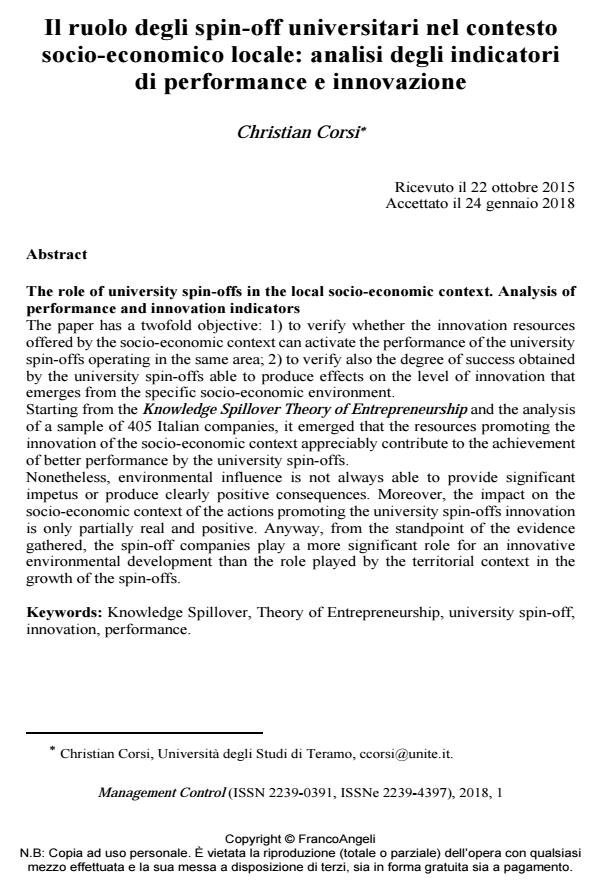Il ruolo degli spin-off universitari nel contesto socio-economico locale: analisi degli indicatori di performance e innovazione
Titolo Rivista MANAGEMENT CONTROL
Autori/Curatori Christian Corsi
Anno di pubblicazione 2018 Fascicolo 2018/1
Lingua Italiano Numero pagine 22 P. 73-94 Dimensione file 283 KB
DOI 10.3280/MACO2018-001004
Il DOI è il codice a barre della proprietà intellettuale: per saperne di più
clicca qui
Qui sotto puoi vedere in anteprima la prima pagina di questo articolo.
Se questo articolo ti interessa, lo puoi acquistare (e scaricare in formato pdf) seguendo le facili indicazioni per acquistare il download credit. Acquista Download Credits per scaricare questo Articolo in formato PDF

FrancoAngeli è membro della Publishers International Linking Association, Inc (PILA)associazione indipendente e non profit per facilitare (attraverso i servizi tecnologici implementati da CrossRef.org) l’accesso degli studiosi ai contenuti digitali nelle pubblicazioni professionali e scientifiche
The paper has a twofold objective: 1) to verify whether the innovation resources offered by the socio-economic context can activate the performance of the university spin-offs operating in the same area; 2) to verify also the degree of success obtained by the university spin-offs able to produce effects on the level of innovation that emerges from the specific socio-economic environment. Starting from the Knowledge Spillover Theory of Entrepreneurship and the analysis of a sample of 405 Italian companies, it emerged that the resources promoting the innovation of the socio-economic context appreciably contribute to the achievement of better performance by the university spin-offs. Nonetheless, environmental influence is not always able to provide significant impetus or produce clearly positive consequences. Moreover, the impact on the socio-economic context of the actions promoting the university spin-offs innovation is only partially real and positive. Anyway, from the standpoint of the evidence gathered, the spin-off companies play a more significant role for an innovative environmental development than the role played by the territorial context in the growth of the spin-offs.
Parole chiave:Knowledge Spillover, Theory of Entrepreneurship, university spin-off, innovation, performance
- L'origine accademica condiziona le pratiche di earnings management? Un'analisi sugli spin-off universitari Antonio Prencipe, in MANAGEMENT CONTROL 2/2025 pp.205
DOI: 10.3280/MACO2025-002010
Christian Corsi, Il ruolo degli spin-off universitari nel contesto socio-economico locale: analisi degli indicatori di performance e innovazione in "MANAGEMENT CONTROL" 1/2018, pp 73-94, DOI: 10.3280/MACO2018-001004